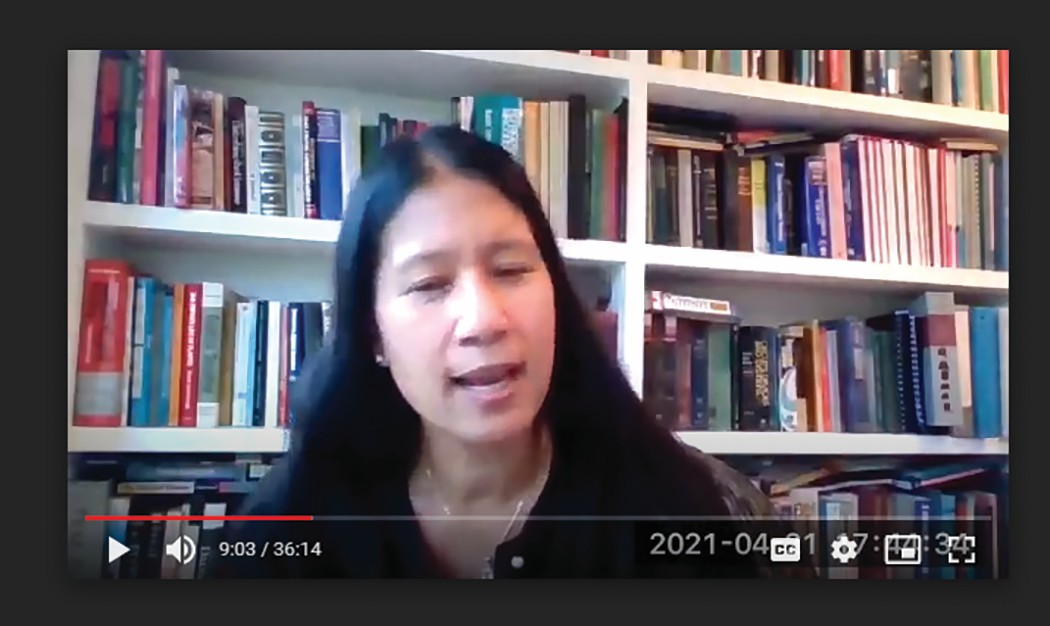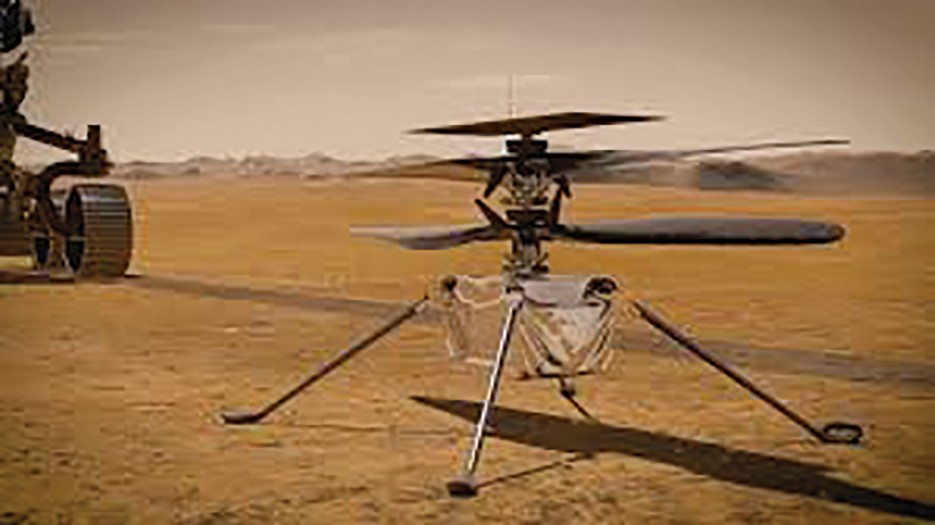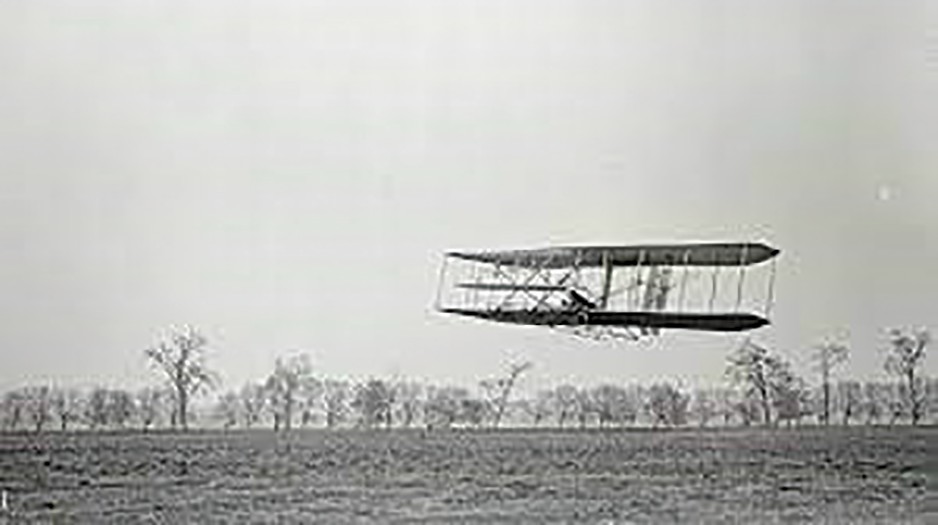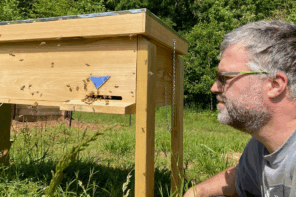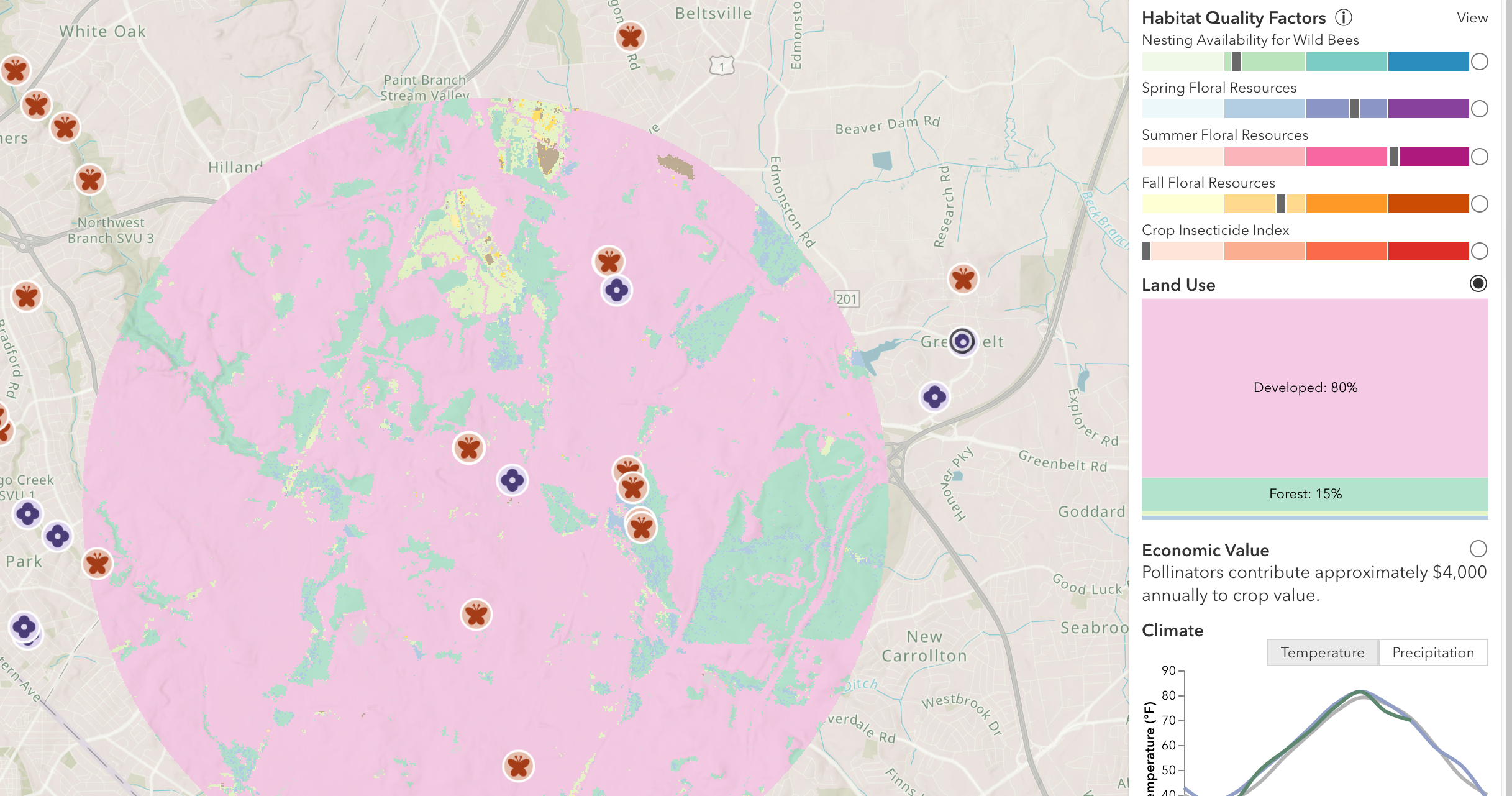Meeting With Mimi Aung, Lead Engineer on the Mars Ingenuity Helicopter
Jerry Hayes
Jerry – Thank you for taking time to talk to me! I don’t want to take your valuable time away from Mars but want to share with you some interesting history. I am lucky to be the Editor of Bee Culture Magazine which has been around for about 150 years. The cool thing about it is that A.I. Root discovered the world of Honey Bees and then, founded Bee Culture magazine. He was also the founder of the A.I. Root Company that made and distributed beekeeping supplies starting in the 19th century. A.I. Root was an entrepreneur. I was talking with the former editor of Bee Culture, Kim Flottum, he said, “Did you know that Ingenuity, the Mars helicopter had a piece of the Wright brothers’ fabric in it?” I had no earthly idea! The reason that this is so cool is because A.I. Root helped the Wright brothers, learned what they did, and was a supporter.
When I heard this I thought, well, I will just call the Jet Propulsion Laboratory (JPL), and tell them this story and see if I can talk to somebody. They gave me your name and contact information – which is simply amazing. You are flying something on another planet which is what the Wright Brothers did here as well. A.I. Root was a thinker, a visionary, he did many things that were new to the general public like highly organized managed Beekeeping. He was very interested in a lot of different things. A.I. Root lived in Medina, Ohio. The Wright brothers are from Dayton, Ohio. The Wright Brothers were not engineers. They did not have a formal educational background. They were machinists and bicycle builders and mechanics. They were obviously super smart and intuitive. For some reason they decided, well, let’s go ahead and make a flying machine.
Nobody believed that they could do it or anybody could make an actual flying machine. So they worked on it quietly. They went to Kitty Hawk, NC and developed and tested gliders and experimented and learned about aerodynamics. Outside of Dayton is an area called Huffman Prairie. This is where, after they had some success with their glider, they wanted to put an engine on it and see if they could have powered flight. So they did that, and again the media said, nobody can fly, What are you talking about? The only thing people can fly, is in a balloon, but you can’t fly with a big heavy engine and you certainly can’t turn or go up and come down unless it is crashing if you lose power.
A reporter for a small local newspaper in Osborn, Ohio heard about their attempts but he didn’t even go to see the Wright brothers; nobody went to see the Wright brothers, but this reporter put a little article in the local newspaper and somehow A.I. Root found it and decided, “I’m going to take the train from Medina, Ohio to Dayton, Ohio, and see these guys.” It wasn’t that A.I. Root didn’t already know about the Wrights because he was an early adopter of the new invention – the bicycle. A.I. Root took the train to Dayton so he could see firsthand what they were doing in 1904. He watched them and hung out with them. They said, keep it to yourself for right now, we’re going to publish something, but we want to have some consistent success first, A.I. Root got to see the Wright brothers, see them fly, see how their invention had progressed, how to maneuver the plane up and down, left and right.
It was amazing and the technology they discovered was new and amazing. A.I. prepared an article for publication in Scientific American. But, Scientific American turned down the article because they didn’t believe it. Nobody believed it. So, the first account of the Wright Brothers success was in Bee Culture Magazine as A.I. Root wrote about it. A Beekeeping magazine published the first article on what the Wright Brothers had done. When I heard that you had a piece of the Wright brothers’ fabric on the Mars Helicopter Ingenuity, I just had to share that story with you and say how much this is in parallel to what they did.
How many people believed that you could make a helicopter to go on Mars? Probably not a whole bunch.
Mimi Aung – You are exactly right. Yes. It was too counter intuitive.
Jerry – You have demonstrated that same entrepreneurial skill. You have that same innate intelligence. You have that same different vison to not only come up with the engineering focus of this, but to organize people who can help make this possible. I got a whole bunch of things here but I wanted to read one thing for you. This is from your Associate Administrator of Science, Thomas Zurbuchen, “Now 117 years after the Wright Brothers succeeded in making the first flight on our planet, NASA’s Ingenuity Helicopter has succeeded in performing this amazing feat in another world. These two iconic moments in aviation history may be separated by time and the 173 million miles of space, they now will forever be linked to the innovative bicycle makers from Dayton, this first of many airfields on other worlds, now will be known as the Wright Brothers Field in recognition of the ingenuity and innovation that continues to propel exploration.” So how do you feel about this?
Mimi – Oh, fantastic. Yeah, fantastic. Exactly! The parallelism is incredible, I think when you do something for the first time you will always have folks that are like, “Why?” You know, all of those questions. Hopefully you’ll be talking to Bob Balaram who is the Chief Engineer and the Chief Architect, he really gets the credit because in the beginning, in the 1990s, there were a lot of pockets of research that show that there is enough atmosphere at Mars, so that if you spin faster, if you’re light enough, you can generate lift and you should be able to fly. So that’s been around since the 1990s, but it hasn’t been possible to build something light enough that generates that much power to be able to operate autonomously and survive autonomously all the way on Mars. So, the question has been technology. It has always been in the cusp of reality. The big moment came in 2012 or so when Dr. Elachi the previous Director of JPL was on a lab tour and I was fortunate enough to be there. I was a Deputy Division manager for the autonomous systems division. We go through different divisions at JPL regularly to visit and learn. On one of the tours, we were using drones to demonstrate some autonomous capability. He said, the question was very simple. Why aren’t we flying a drone, like, a small rotorcraft, why aren’t we flying those on Mars?
So he posed that question and he never let go of it. He really had the vision, it all clicked, Right? We connected him with Dr. Balaram, who had done the research in the 90s. Now this is 2012-13. I was on the line management side. I was only involved in, the initial connection. They went off to visit him. Dr. Elachi, said,” let’s give this a go, and dare mighty things.” That’s what we do at JPL. Right? Try many things. Let’s do it. So there was a low level research and technology development that was kicked off to say, all right, Bob Balaram restart that research. Bob formed a small team and then started sharing the technology that’s available around currently and came up with the answer that it might be the right time because we now have much better batteries, we have better solar cells, we have electronics, we have computers, we have sensors, and because of these telephones and autonomous cars are now very reliable. The whole technology is there, the ocean tide raises all boats, right? That is where it was very difficult for the engineering community to believe and ask ‘really are you sure?’ Bob’s belief never wavered, and he’s of those people who has thousands of ideas because to him it is never, never impossible. They started this research at a low level and it started to show lift with the blade spinning in a simulated smaller atmospheric chamber with guide rails and saying there is definitely lift. Then the director Dr. Elachi said, okay, this is good. But the next thing we want you to do is now start a demo in a chamber without guardrails, do a small-scale vehicle, and let’s really see it lift. That was September of 2014. That’s the point when I joined because once we were going, we were moving forward from a small research feasibility analysis to now the first of a very, very early phase of implementation. I came in about that time. Then we started with a one-third scale vehicles that we did. I tend to be more on the “Let’s make it work all the way to a hundred percent mode”, so this is why I admire the Wright Brothers because there are always design possibility analysis, but it also takes so much, so much work, to really take it to a hundred percent reality. I love it, when it’s challenging. Once I joined and saw the analysis says you should get lift, and you should be able to control it I was even more convinced. But here’s why we hadn’t been able to do it until I saw that separate analysis. So, it was earlier, you know, right after that little one-third scale vehicle where we demonstrated, and we showed lift, but it couldn’t be controlled. In fact, it crashed right away because human beings outside, couldn’t keep up with it. We didn’t have sufficient computer power. So, I think my firm belief came after that lift demo and knowing really why it failed. The thing was that if you spin fast enough, no question you’re lifting, but it now is all about fast enough feedback and then building it so that it’s in a way that models something that can be modeled. It isn’t just about a blade, but like the blades have to be really stiff because the control engineers are saying, yeah, we have algorithms, but we need to test them and make sure that they follow the lift track. And the dynamics that we are assuming are true before we do a control loop around it. But to be able to predict, besides being able to spin fast, blades have to be stiff, which is a very hard requirement to give to somebody. To be really strong, but by the way, we wanted it to be really stiff, not to fly, but so that we can model it. Right? Then there’s a fabulous argument with mechanical engineers. Like, are you kidding? So that’s where my engineer side comes out is once I understand the basic algorithms and what all this has to come together how are we going to form a team to overcome? So it was around January of 2015, after that little lift demo failed. It was all clear at least in my mind, how we were going to have to be so tight as a team, and we need every single discipline cause every single discipline was going to have to invent something to make that work. That’s when I became a full believer. I’m at a little bit of a latecomer so Bob Balaram gets all the credit, he never wavered. I got converted around January of 2015 and never stopped believing since.
Jerry – Wow! There, again, that parallel with the Wright brothers, because they practiced at Huffman Prairie because it was flat and a little marshy, so they would take off and crash and they would say, Oh, okay, go back and fix some stuff. They would take off and crash again and they would fix something and then finally fly straight. Then somebody said, “Well, what good is that, if you can’t turn it, what are you going to do?” So then they started turning and they would crash and they would fix it. This is a whole learning paradigm of how they could do it. Then other people said, okay, so now you can fly. What’s good does that do, since we have trains? What difference does it make? You’re not going to be able to get anybody in an airplane for goodness sakes.
Mimi what is your vision for what you’ve done?
Mimi – Oh yes, absolutely. We had to be really motivated because this was a very hard trudge, for many, many years, but the vision is that we are just like you were saying, we know how to use the aerial dimension that is there at Mars. We’re not using it today. So we have rovers on the surface and we have spacecraft in orbit, but neither is able to fly, like you said, in a controlled manner. To be able to go to exactly where you want to go, come back the way you want to, that gives us an entire new dimension of space exploration. There are so many places of scientific interest that we now can get to, like their side of a steep cliff. They have evidence of frozen ground, and ice that we want to study or go down deep crevices that a Rover can never go to. When astronauts get there, astronauts are going to want to have something fly ahead to really scout out the place. You can imagine, right? It just opening an entire new dimension that we’re not utilizing. So that’s really the basic motivation.
Jerry – Yeah. So, who is you’re A.I. Root? Who is the one that has discovered you and is reporting on you and advertising you and bringing all the value that you should have and even more?
Mimi – Oh, well, okay. First of all, in terms of program and leadership, its Dr. Charles Elachi definitely. Then when he retired, Dr. Mike is now our current director, supported us strongly. So I think, JPL leadership and then the other centers that are with us, NASA, Ames, Langley, AeroVironment, Qualcomm, Solera, you know, everybody at the leadership level really supported us. And that’s really important, because among the people, there were some that said, you know, you guys are going to spin it, but I don’t think you’re going to see lift. When it really happened, they couldn’t believe it. And we’re like, what does analysis say?
Technically and organizationally, we were always supported. And then the people were very fair. Once we showed lift, on our course to success, they were converted the next day when we did the free flight. From the technical side, the organizations reporting side, I have to give credit to D.C. Agle, JPL Media Specialist. DC Agle started reporting on this three and a half years ago or so. He is the one that found the material from Dayton museum because we said we would love to fly something from the Wright Brothers, because, and personally, for a lot of us, my personal connection to the Wright brothers is that journey from theory to reality, to me that that’s my sweet spot.
And that’s who I admire –people who do that, right? Cause it’s very, very hard to do that. So for me, the Wright Brothers are right there. We said, is there a small coin that was made to highlight the Wright Bros achievement or, something from the materials of the Wright Flyer? So he looked at coins, there was a wooden piece, I think, from the Flyer, but then we weren’t allowed to put it on. And finally, he found it, a small piece of cloth from the wings of the Wright Brothers plane. I have to give all the credit to DC Agle. He has been the one that has told the story for years and he believed in this.
Jerry – I don’t want to get too personal, but did you ever go to sleep some night and wake up at two o’clock in the morning and say, oh my gosh, I don’t know if we can do this?
Mimi – No, it’s funny you say that. I have a question that I love to ask my team. And it’s happened every step from the night before, or the few days before we were going to fly the first risk reduction flight, where we had a rotor system, no computers, they were under the chamber. And, we just had the rotor system, but with a computer underneath, with the long tether so that you must close some control, but you know, you don’t have to take all the weight, the mass problem yet. That’s what convinced everybody that it is possible to do fly in a control power mode. Then we went on to build the engineering development, modern flight model. So every big step, I have a favorite question that I like to ask the team, “Guys, I mean, guys, you know, both men and women, Hey everybody is it going to work?”
And I love to ask this because, you know, I want to see the first reaction. Everybody always said, yeah, it’s always been yes for the following reason. Because we’ve done it as a team, we really formulated a very systematic, incremental steps. We did what the first one third scale told us that we don’t have to worry about the lift model anymore because the RPM that the blade spun was right. And when it lifted, it nailed the analysis. We should spin it. I think it was about 8,000 RPM. It was for that one third scale up. And it lived right at the predicted RPM. So we didn’t have to worry about lift anymore. The next step we went to was, okay, let’s not stay at one third scale anymore.
Now full-scale at 1.2-meter diameter. That’s all we can fit on the Rover. So don’t worry about going bigger than that. That’s all we can fit. So let’s go to the 1.2 meter diameter and the blade at core distribution, the twist all was optimized by Ames and Langley. Help came from AeroVironment, they hold the record for the highest-flying aircraft, I think at 118,000 feet or something like that, they hold the very, very highest flight. So AeroVironment has been with us from day one. And then the blade dimension distribution, you know, the shave, the twist, all of that was analytically optimized by Ames and Langley working, with AeroVironment JPL. Once that blade was modeled, then they model the lift and the drag.
If you like cut the blade into 33 analytical pieces and say, okay, each piece is being spun and hitting a Mars – like atmospheric density, right? With that same representative molecules, and primarily CO2, what is the lift? What is the drag? And then it was integrated back. So that now if you actually spin the whole piece, two pairs, counter rotating, what would be the lift and the drag, and that predicted the dynamics. So Ames and Langley did that. And then JPL, we’re very good at systems, you know, control systems, autonomous systems… well, our flight control lead then took that lift and drag, which gave the dynamics and then repeated a closely controlled system design around those dynamics predicted by the partners, you know, the rotorcraft experts. And then we say, okay, for this dynamic, we need to sample this fast, it’s about 400 to 500 Hertz. I mean, we’re sampling the sensor and then commanding the plates back to command. And then we design the closed loop control around it and derived from there, all the requirements now mechanical, you have to build something this stiff, you have to be this light and then this is where Bob Balaram came in. Havard Grip, who’s our chief pilot, is also the flight controls and Robotics technologist. He’s also the control system, and guidance, navigation and control speed Specialist who actually said, this is how we’re going to have to fly. And then, Bob Balaram had the job of saying we can now fly. Right? How does a vehicle stay together?
How much energy do you need to fly? How much energy do you need to survive and how much do all of these components weigh and what is the give and take so that we can make sure we can come under the mass limit? So, wow when you say, how do you feel and how come you knew? How, come you were confident it could work, because we took such systematic steps. Every time we came to the next step, you know, the first step was to fly this system with the computer underneath. We were very confident by then that it should fly because we first took that system and invented, there’s another whole set of inventions on structures to hold this rotor system, and make sure that structural frequencies didn’t interfere with the structures on the vehicle. I mean, all kinds of inventions that we didn’t know we had to do, just do them to test them. We had taken those very gut-wrenching kind of steps in testing the interim steps. So, every time we came to the next step, it came to okay, now we have done the spin, now what? We’ve looked at that, we’ve pitched the blades and we get the force we expected. We have the torque cancellation, you know, from counter rotations. Yeah. So we have checked all those things and we’ve looked at the dynamics, and all of this. By the time we flew, we knew after we flew the risk reduction vehicle, NASA was totally on board at that time. And they go, wow, you’ve really proven that you can fly. The next thing is we need you to do is go ahead and build a whole system for Mars, but now can you build it all so that the mass is less than 1.8 kilograms?
The thing with Mars is the atmosphere is so thin. Everything had to be 1.8 kilograms, which is four pounds on earth. So it came from a physics, aerodynamics, initial feasibility to now an engineering problem. Now we knew all the equations, but now it’s all about building it. And so again, when we overcame that mass constraint and the power constraint, it’s all tied together, the mass, the power and the flight time is like a big trade, and that’s managed at Bob Balaram’s level. When we closed that we felt really great. And we say, okay, let’s take that engineering development model now, it came out at 1.7, We beat it. You know, we got it, we flew that in the chamber.
Then, you know, we were confident again, because it was incrementally tested. And then the last part is when they work, NASA says, all right, you are now authorized to build the flight model, which became Ingenuity. The one that we can go to Mars with. Until we got to that engineering development model, it was like, whether, can we get it, you know, can we get it to fly? Can we get it under 1.8 kilograms? And then when it came to the flight model, okay, can we modify just minimum so that we can actually ride on the Rover? Because some things had to be changed, you know, like the blades, we had to add hinges to the legs, some had to be bent up, or, there was one of the feet that was modified just so it could be held.
And can we do all these modifications and still have ingenuity fly in the chamber, which we did. So once flown in the chamber and we got onto Perseverance Rover and they got launched, the rest all became not can we, it became now the other side of the slope, is this going to survive, right? Given that we had to use very non-space qualified components, which we tested for space environment. Now, do they survive? And it’s all about, do they survive? And did we overlook anything in our models? It is all about going backwards and now checking on space environment and Mars environment. We were feeling very good all the way until the first flight because everything has checked, the energy was good. The thermal models were good. We were communicating, the blade was spinning the way we did it. And the first flight was the very last check mark to really say, yeah. So that’s kind of the whole story. So that’s where the confidence comes from.
Jerry – Well, that is all true, you and your team were first. You did things that nobody else has ever done. Just like the Wright Brothers did things that nobody else had ever done. And I just think that’s so exciting! It’s so exciting! Let me, and I don’t want to take up all your time but let me just read the last paragraph. A.I. Root wrote an article about the Wright Brothers in Bee Culture Magazine that nobody else would publish, because shortsightedness reigned they all said “nobody can fly”. A.I. Root wrote in 1905, January Bee Culture magazine “When Columbus discovered America, he did not know what the outcome would be. And no one at that time knew. And I doubt if the wildest and enthusiastic caught a glimpse of what really did come from his discovery and life manner, these two brothers have probably not even a faint glimpse of what their discovery is going to bring to the children of men. No one living can give a guess of what is coming along this line, much better than anyone living can project the final outcome of Columbus’s experiment when he pushed off through the trackless waters, possibly we may be able to fly over the North pole, even if we should not succeed in tracking the stars and stripes to its upper most end”. And that’s what you have done. You have done this, you’re Columbus, you’re the Wright Brothers. And I’m just so proud of you and NASA and JPL and everyone else.
And so my next question is I think your next goal should be to become a beekeeper. What do you think?
Mimi – Oh Yeah? I would like to hear why you say that, you must have a reason?
Jerry – For me and I’ve been in it a very long time, first, it’s amazing because how many positive relationships do humans have with an insect? You know, maybe silkworms, crickets, ladybugs or something else, but it’s not very much. And then honey bees if you don’t treat them right, they’ll will protect themselves. So we Beekeepers have this relationship with an insect that will protect itself. But this insect will forage about a two and a half mile radius looking for flowers to get nectar and pollen from and transport this pollen from flower A to flower B. So that plant can reproduce and make a seed, a fruit, a vegetable or a nut all valuable nutritious food that feeds us, feeds pets and livestock and wildlife while helping plants reproduce to sustain the environment. It is this amazing connection we have and need. I don’t mean to be rude here, but a flowering plant, can’t pull herself up out of the ground, walk over and mate with that other flower over there. And so, these plants had to figure out a relationship with an insect. I don’t know how this happened, how they negotiated all this. I’ll give you some nectar and you take my pollen full of sperm over there so I can reproduce. And then I’ll let you keep a little bit of the pollen for your food and the sweet nectar. This is two different species, a plant and an insect cooperating…… two totally different species cooperating. We humans are the same species, and we don’t cooperate most of the time.
Mimi – And so that’s, intriguing
Jerry – Yes, exactly. Well, anyway, congratulations again, congratulate your team. Thank you for taking this time when I know you have 500 better things to do, but I, I appreciate it. It’s an honor to talk to you.
Mimi – It’s an honor to talk to you. Yes. Especially now I know about A.I. Root’s background.
Thank you so much for recognizing our team. It’s really nice to hear that you appreciate our work, it looks simple when you look back, it was definitely a journey because there were so many gut wrenching steps, as you progress and we just had to technically, take control of it. Thank you so much.








